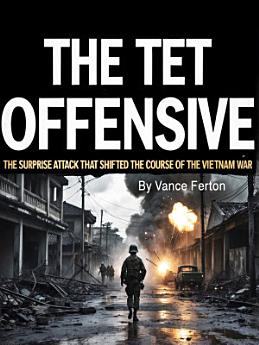The Tet Offensive: The Surprise Attack That Shifted the Course of the Vietnam War
About this ebook
By the end of 1967, the massive American military buildup in South Vietnam had reached its peak effectiveness, with over 500,000 personnel deployed throughout the country and sophisticated weapons systems that had inflicted severe casualties on communist forces. The search and destroy operations conducted by American units had disrupted traditional Viet Cong base areas, while the extensive use of herbicides had eliminated much of the jungle cover that had previously protected communist movements. The pacification programs, despite their limitations, had begun to show results in some regions, and the South Vietnamese military forces had improved significantly under American tutelage and with access to modern equipment.
These tactical setbacks had created genuine strategic challenges for the communist leadership, which faced the prospect that continued attrition warfare might eventually weaken their forces to the point where continued resistance would become impossible. The heavy casualties suffered during major engagements with American forces had depleted experienced cadres while making recruitment increasingly difficult in many areas. The disruption of supply lines and base areas had created logistical problems that affected the ability to sustain large-scale operations, while the growing effectiveness of allied intelligence had made traditional operational security measures inadequate.








